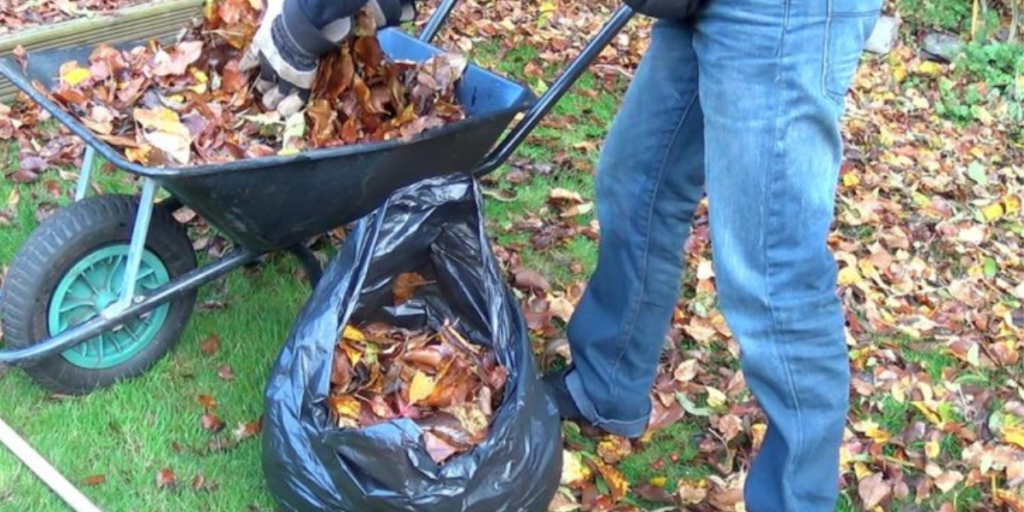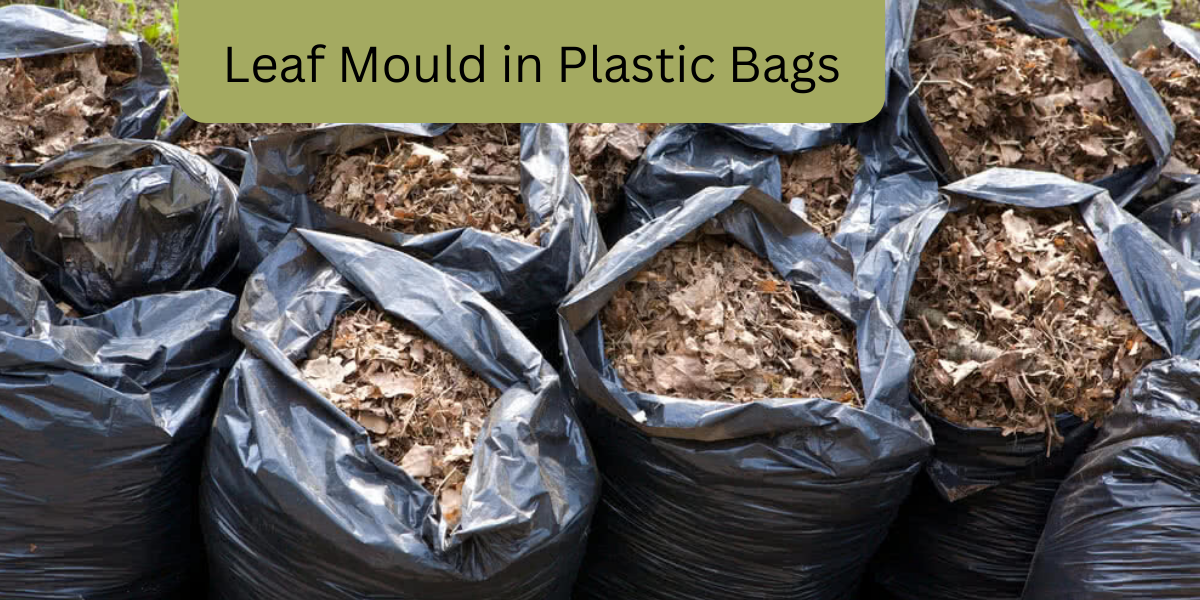If you are fed up with the messy, leafy lawn in the falls, it is better to turn the mess into useful, high-quality compost. Leaf mould is a fantastic way to add nutrients and improve drainage in your garden.
It’s easy to make, and plastic bags are an ideal way to contain it. They make you tension-free from shedding leaves in the autumn, on one hand, your plants also get a perfect compost after a few months on the other hand.
What is Leaf Mould?
Leaf mould is made up of dead leaves that have been broken down by fungi. It is a valuable addition to the garden, as it helps to improve soil structure, aeration and drainage. Leaf mould also provides a slow release of nutrients, which can help to promote plant growth.
It also takes a long time to break down, so it is best to make it in advance. This process can take anywhere from a few weeks to a few years, depending on the climate and the type of leaves involved. It can also be used as mulch or added to compost.
How Leaf Mould is Effective for Plants?
Leaf mould is effective for plants because it contains a high concentration of nutrients. It helps to improve soil structure, and it can increase water retention in the soil. Leaf mould is made up of decomposed leaves that have been broken down by fungi. This process takes place over a period of time, usually around 12 months.
It is an excellent source of nutrients for plants. It is rich in nitrogen, phosphorus, and potassium, which are essential for healthy plant growth. Leaf mould also contains other trace elements that are beneficial to plants, such as magnesium, calcium, and iron.
It can even assist in improving the structure of the soil. The fungi that break down the leaves create a network of microscopic channels through the soil. This increases aeration and drainage, which can be beneficial for plant roots.
When used as a mulch, leaf mould can help to suppress weeds and reduce water loss from the soil. It can also be used as a compost ingredient or added to your garden’s topsoil. Leaf mould is an excellent source of humus, which helps to promote healthy plant growth.
Which Leaves are Best for Leaf Mould?

The best leaves for leaf mould are actually the ones that are starting to turn brown and decay. These leaves have already begun the decomposition process, so they will break down more quickly in your compost pile. However, if you want to be specific, here is a short list of the best types:
Beech
Beech leaves are one of the best materials for creating leaf mould. They are high in lignin, which makes them slow to decompose. This is important because it means that the leaves will break down slowly and release nutrients over time.
Birch
Birch leaves are also a fantastic pick as they decompose quickly, meaning that you won’t have to wait long for your leaf mould to be ready. Tannins in them help to discourage the growth of unnecessary fungi and bacteria, which can cause many problems.
Lime
Lime leaves are an excellent source of leaf mould too. This is because they have a high carbon-to-nitrogen ratio, ideal for the production of leaf mould. Furthermore, lime leaves are also rich in calcium, promoting the growth of beneficial fungi in the soil.
Oak
Oak leaves are the best for leaf mould because they are slow to decompose. This means that they will break down into finer mulch, perfect for your garden beds. Oak leaves also have high levels of tannins, which help to discourage fungi and other pests.
Willow
Willow leaves are best for leaf mould because they contain high levels of lignin. Lignin binds together plant cells and is resistant to decomposition. Hence it breaks down slower than other types. This makes them ideal for creating rich compost, perfect for mulching.
Conifers
Conifer leaves are high in carbon, which is essential for the development of leaf mould. They also break down quickly, meaning that you can start using your leaf mould sooner. Conifers are also relatively low in toxins, making them safe to use around plants.
Evergreen
Evergreen leaves are also among the best types to use for leaf mould because they decompose more slowly. This means that the nutrient content of the leaf mould will be higher. They also create a more acidic environment, discouraging the growth of weeds.
How to Make Leaf Mould in Plastic Bags?
Making leaf mould is a fantastic way to recycle garden waste and create a free, nutrient-rich soil conditioner for your garden. It’s also really easy to do! Follow the steps below:
- Collect your leaves! You can use any type of leaf but avoid ones that have been sprayed with chemicals.
- Once you have a good number of leaves, chop them up into small pieces. This will help the leaves break down more quickly.
- Put the chopped-up leaves into plastic bags, making sure to poke some holes in the bags for air circulation.
- Store the bags of leaves in a cool, dry place and wait for 8 months to 2 years while they decompose into rich leaf mould.
- Shake the bag every month or two to mix the content and make a uniform mould.
- Use the leaf mould in your garden to improve soil quality and add nutrients.
Why Making Leaf Mould is Always Time Consuming?
The fourth step in the above section probably has stunned you. Why does it take so long to make leaf mould? It’s not like you’re doing anything complicated – you’re just throwing some leaves into a bin and waiting for them to decompose, right? Wrong! Making leaf mould is actually a very time-consuming process as they take up a lot of space.
A single bin full of leaves can easily weigh over 100 pounds, and that’s before they’ve even started to decompose. Once they start breaking down, they’ll compact even further and the bin will become even heavier. This weight makes it difficult to turn the leaves, which slows down the decomposition process.
How to Prepare Leaf Mould Faster?
Leaf mould is a great way to add nutrients and improve the structure of your soil, but it can take up a lot of time to prepare. If you want to speed up the process, here are a few tips.
- To start, choose leaves that are dry and free of debris. Birch, Lime, and Conifer leaves work well.
- Avoid using leaves from evergreen trees, as they take longer to break down.
- Shred the leaves with a lawnmower or garden shredder, then place in a wire mesh cylinder or bag.
- The smaller the pieces, the faster they will decompose.
- Keep the leaf mould moist by adding water every few weeks and turning it occasionally to aerate it. In six to eight months, you should have rich leaf mould that’s ready to use in your garden.
Conclusion
Leaf mould is the best option for your plants, soil, and garden. It enriches the soil, provides essential nutrients for your plants, and helps retain moisture. Leaf mould is also a great mulch for your garden.
Though time-consuming, it is easy to make. But we also told you how to make leaf mould in plastic bags even faster. So, collect your garden leaves now and start their decomposing.

